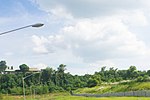Ateneo de Manila University
The Ateneo de Manila University (Filipino: Pamantasang Ateneo de Manila; Spanish: Universidad Ateneo de Manila), also known simply as the Ateneo de Manila, the Ateneo, or AdMU, is a private, research, basic and higher education institution founded and run by the Society of Jesus in Quezon City, Philippines. Founded in 1859 as Escuela Municipal de Manila, it is the second-oldest Jesuit-administered institution of higher learning in Asia-Pacific. The university provides primary and secondary education as well as undergraduate and graduate instruction in the humanities, social sciences, natural sciences and engineering, and business. It offers professional degrees through the Graduate School of Business, the School of Government, the School of Medicine and Public Health, and the Ateneo Law School. Known for its Jesuit liberal arts tradition, the humanities are a key feature of Ateneo education at all levels of study. This is especially pronounced in the undergraduate level as the Core Curriculum. The Ateneo is widely regarded and often cited as the highest-ranked private university and second overall in the country and admission is highly selective.
Excerpt from the Wikipedia article Ateneo de Manila University (License: CC BY-SA 3.0, Authors).Ateneo de Manila University
College Lane, Quezon City
Geographical coordinates (GPS) Address Nearby Places Show on map
Geographical coordinates (GPS)
| Latitude | Longitude |
|---|---|
| N 14.638888888889 ° | E 121.07777777778 ° |
Address
Loyola Schools
College Lane
1108 Quezon City (3rd District)
Philippines
Open on Google Maps





